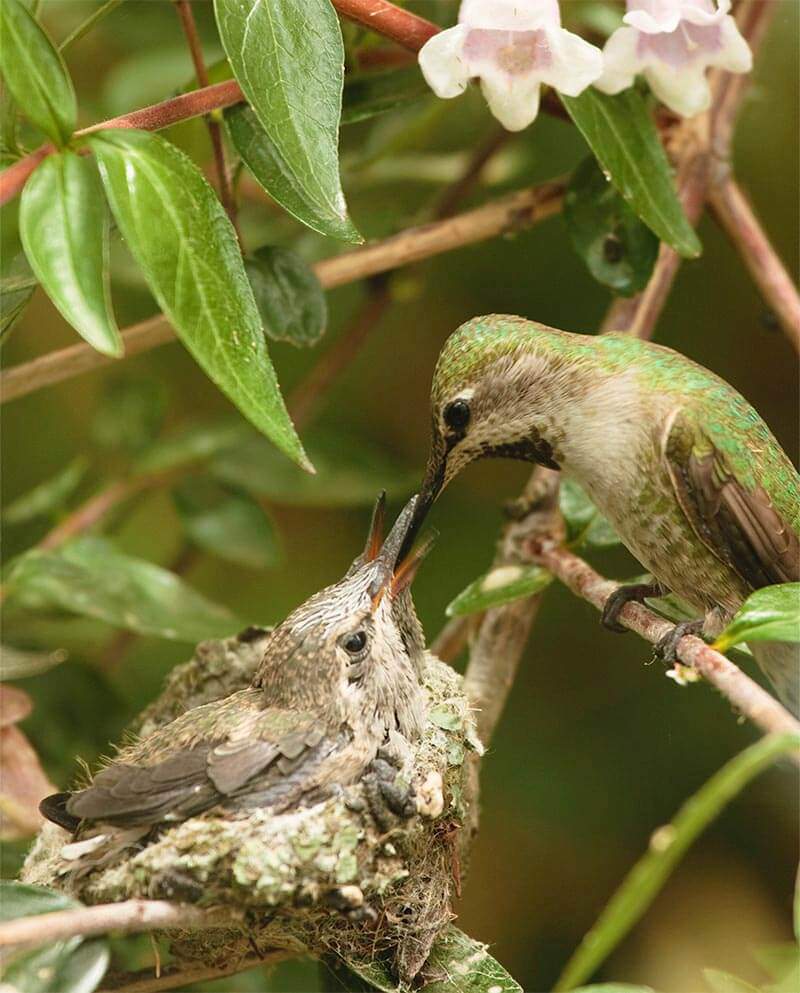Birding Activity: Make A Nesting Ball
Are you still waiting for your bird houses and nest boxes to fill up? Does there seem to be a “no vacancy” sign deterring birds from your backyard bird shelter?
Providing a housewarming gift in the form of a nesting ball (shown below) can attract backyard birds to your house, while also giving them a head start in gathering nesting materials.
After a long winter spent indoors, this activity encourages people of all ages to go outside and enjoy the warmth of spring.
To get started, you will need:
- Scissors
- Mesh bag, basket, suet cage, wreath or wreath mold, grapevine ball, or other object(s) to hold down or enclose materials
- Nesting material (listed below)
Birds can be very resourceful when building nests. Gathering materials and finishing construction can take anywhere between a couple hours to weeks. Their dedication to constructing their nest leads to protecting their eggs and young from cold temperatures and nearby predators.

Each species of bird use a unique set of materials to build its nest, due to variation in clutch size (number of eggs produced at once), frequency of use, and nest site location.
Because of these differences, you should offer a variety of materials. This includes (but is not limited to) natural materials that your yard might provide, as well as items you may have purchased from a store:
Yard Debris
- Dead or dried leaves, pine needles, pine straw, grass clippings
- Twigs or sticks, tiny branches
- Moss
- Cattails, milkweed
- Other fluffy plants and seeds
Human Hair and Pet Fur (Undyed)
Natural Fibers
- Cotton balls (slightly pulled apart for easier grabbing)
- Cotton
- Wool
- Jute
- Feathers from an old down coat or pillow
Fabric
- String
- Twine
- Ribbon
- Lace
- Yarn
Instead of getting rid of yard “waste,” consider gathering potential nesting material for your nesting ball. You can also leave the “litter” in your yard for birds to sort through and gather materials for their nest.
Be sure to avoid synthetic (artificial, chemically-treated) materials and instead focus on gathering more organic, natural materials. Synthetic materials such as dryer lint can be chemically-treated and potentially toxic to our backyard friends.

If offering string, ribbon, or cloth materials, make sure to cut these into 3-6 inch segments. Shorter material will not be as attractive to birds, while longer strands might tangle and potentially harm your birdhouse residents.
You can place these materials in a recycled onion or orange mesh bag, suet cage, grapevine ball, or other objects that can easily hold nesting materials. If placed in a mesh bag, make sure the openings are wide enough to pull materials out.
Finally, place your nesting container in an area that’s easy to see and protected from the elements. Make sure it can’t get wet and won’t get blown away!
You can also scatter materials on the ground, piled in areas sheltered from the elements, or spread on top of shrubs, tree crevices, and branches. Don’t tie loose materials down, since it should be easy for birds to bring back to their nest-in-progress. Instead, try gently tucking them or loosely weaving them through branches to make them easy to pull away.
After you’ve set up your nesting materials outside and your backyard comes alive with birds, you can try to find nests that have used your materials. To take it another step further, you can also visit the Cornell Lab of Ornithology's NestWatch.org and help scientists by carefully monitoring your feathered friends’ nests, watching their families grow.





